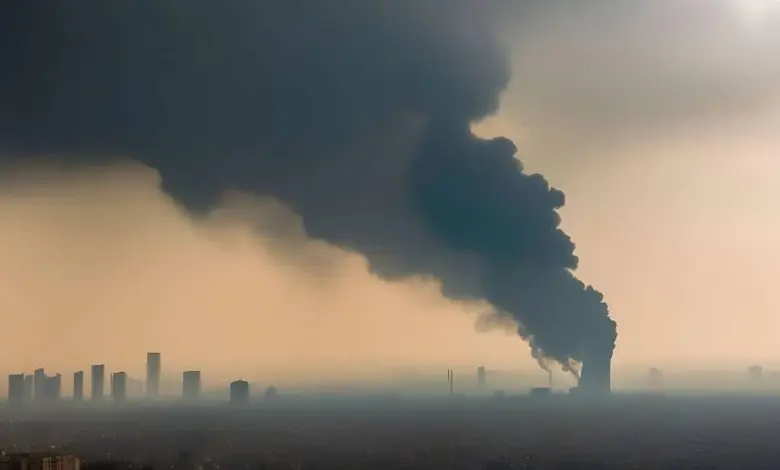Iran’s Solution to Air Pollution

iran tehran air pollution factory smoke (1)
Written by
Amir Taghati
In recent years, air pollution in Iran has reached alarming levels, posing a significant threat to the health of its citizens. This issue has become so severe that schools are forced to close almost one day a week due to the polluted air. The meteorological department consistently declares Tehran’s air as among the most polluted in the world, even during winter, which traditionally should have cleaner air compared to other seasons. Shockingly, air pollution has now become the third leading cause of death in Iran.
The Air Quality Index (AQI), categorizing air quality into five levels, serves as a crucial measure. Ranging from 0 to 500, the divisions include: 0-50 (Good), 51-100 (Moderate), 101-150 (Unhealthy for sensitive groups), 151-200 (Unhealthy for everyone), 201-300 (Very unhealthy), and 301-500 (Hazardous). Analyzing Tehran’s AQI over the past decade reveals that only 150 days had “Good” air quality, averaging 15 days annually. Last year, there were only three days with “Good” air quality. Presently, schools in Tehran and other cities frequently close due to air pollution, prompting weather authorities to advise sensitive groups to stay indoors.
Air quality is measured by two particle categories: PM2.5 (particles with a diameter smaller than 2.5 micrometers) and PM10 (particles with a diameter between 2.5 and 10 micrometers). PM2.5 particles, mainly from burning fossil fuels by outdated vehicles, contribute significantly to Tehran’s pollution. The use of substandard gasoline and diesel, containing high levels of lead, further exacerbates the problem.
A classified document from the regime’s Ministry of Petroleum reveals that, to tackle the daily gasoline shortage, the country incorporates over four million liters of materials obtained from petrochemical plants into the refined gasoline produced in its refineries. Furthermore, a hazardous and carcinogenic substance known as “MTBE” (Methyl Tertiary Butyl Ether) is mixed into subpar gasoline in quantities exceeding two million liters daily to improve its combustibility. These practices are significant factors contributing to the risk of severe diseases. Notably, the Taliban recently declined more than 70 Iranian gasoline tanker exports citing concerns related to these practices, and barred their entry into Afghanistan.
The air pollution in #Iran is the direct result of the regime’s wrong policies, and the mullahs are using it to silently kill #Iranians and make more money#HumanRights #WeStand4FreeIranhttps://t.co/S0MDxYGyIQ pic.twitter.com/QG5b0dRO3c
— NCRI-FAC (@iran_policy) January 6, 2021
The situation in Iran regarding air pollution is deeply troubling, primarily due to the use of Mazut fuel in power plants and various facilities, as well as the incineration of waste, particularly petroleum-based materials like plastics and rubber. These practices contribute significantly to the production of harmful PM2.5 particulate matter. Additionally, PM10 particles, arising from dust and the combustion of wood and vegetation, exacerbate the problem, especially in cities.
The Ministry of Health reports over 26,000 deaths attributed to air pollution in the past year, with Tehran alone accounting for more than 6,000 of these fatalities. These deaths result in an estimated $11 billion in economic costs, including lost income, healthcare expenses, and other related factors. Despite the considerable negative impact, the government, which is not elected by the people but appointed by the Supreme Leader, prioritizes policies dictated by the latter over addressing public health concerns.
Interestingly, research indicates that the benefits of reducing air pollution far outweigh the costs. However, the current leadership, often comprised of individuals associated with criminal activities, seems indifferent to these findings. The regime’s constitution condemns actions threatening public health, including environmental pollution, but entities like the Revolutionary Guards contribute significantly to such pollution without accountability.
#Iran: Cancer-Causing Pollution in Kazzaz; A Village That “All Doctors Know About”
The heavy “air pollution” in this area, has led to high rates of cancer, infertility, defective embryos, disabled children, skin diseases, and even death. https://t.co/FA7dYwmRjC #FreeIran2018 pic.twitter.com/6O1UXUmnwc— NCRI-FAC (@iran_policy) September 28, 2018
Moreover, despite Iran possessing abundant natural gas reserves, Mazut fuel continues to be used in power plants. The surplus Mazut burdens refineries, as there is no global demand, and it is used in Iran due to its affordability. The regime’s claim that cheap fuel leads to increased consumption is a tactic to justify raising gasoline and diesel prices while deflecting blame onto the public.
The undeniable reality is that when the government is the primary source of air and environmental pollution, and the privileged can afford to reside in the healthiest areas of the country, there is little incentive to address or alleviate the issue, resulting in ongoing degradation each year. Consequently, if Iranians aspire to breathe clean air, they must eliminate the primary source of pollution.

